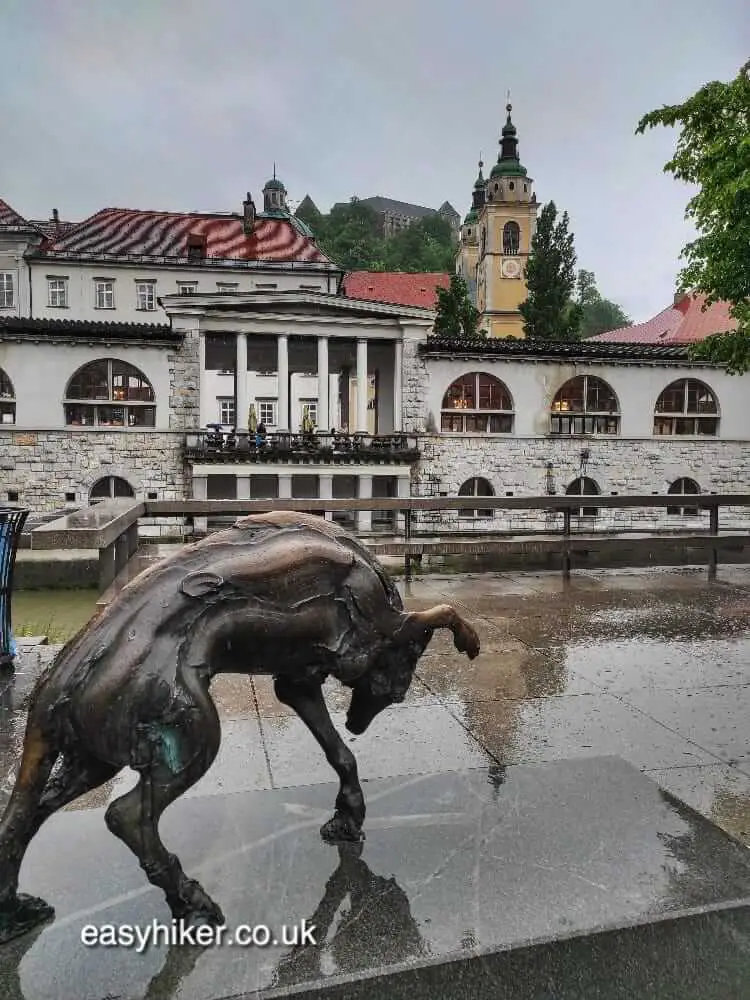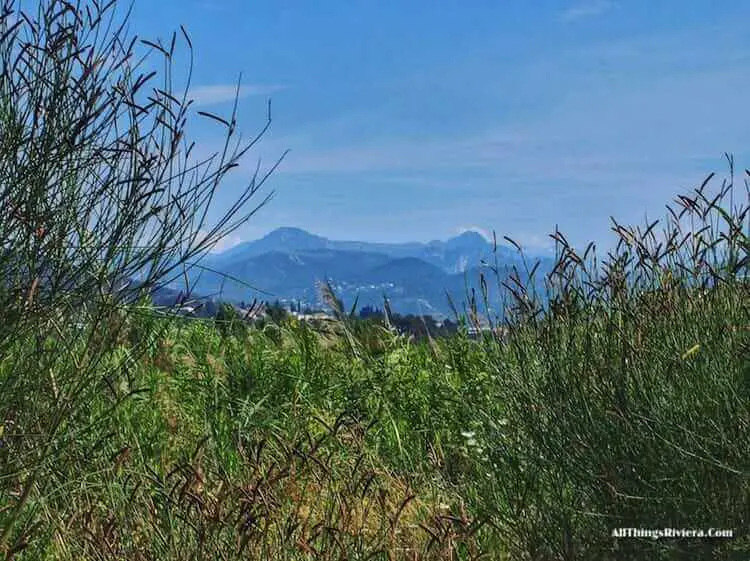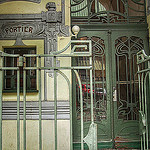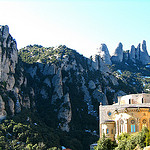The Alps and the artistic avant-garde do not mix well. Alpine towns tend to be inward-looking and conservative – which is why free and creative spirits avoid or, if born there, flee them to escape to the next larger city as soon as they can.
There are also free-spirited and open-minded Alpine towns, of course, but they are rare exceptions and, by and large, the result of an exceptional background story.
Ljubljana is a case in point.
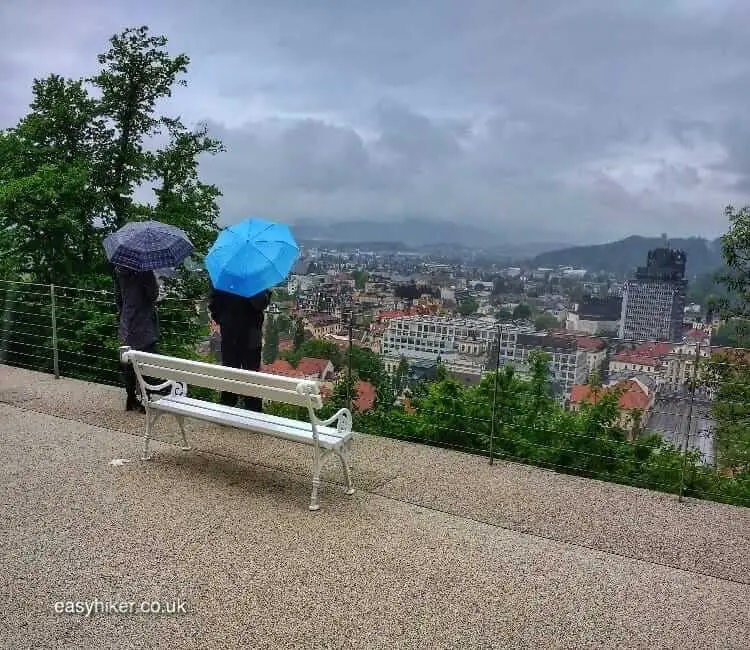
At first glance, the capital of Slovenia looks a lot like a handsome provincial town in the eastern foothills of the Austrian Alps, which is exactly what it was for most of its history as the only large-ish town in the so-called Duchy of Carniola.
Baroque churches are scattered throughout the town centre …
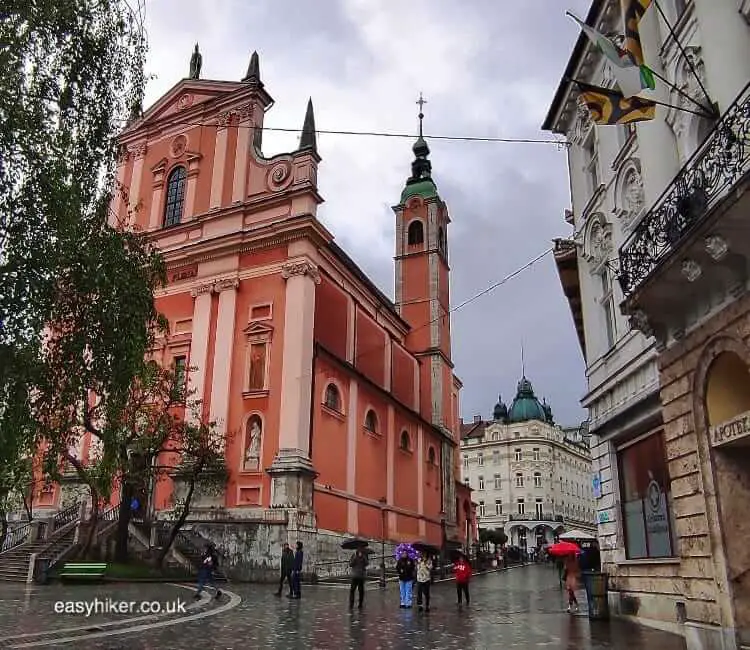
… coffee shops invite you to sit down and pause during a river walk under onion-shaped spires …
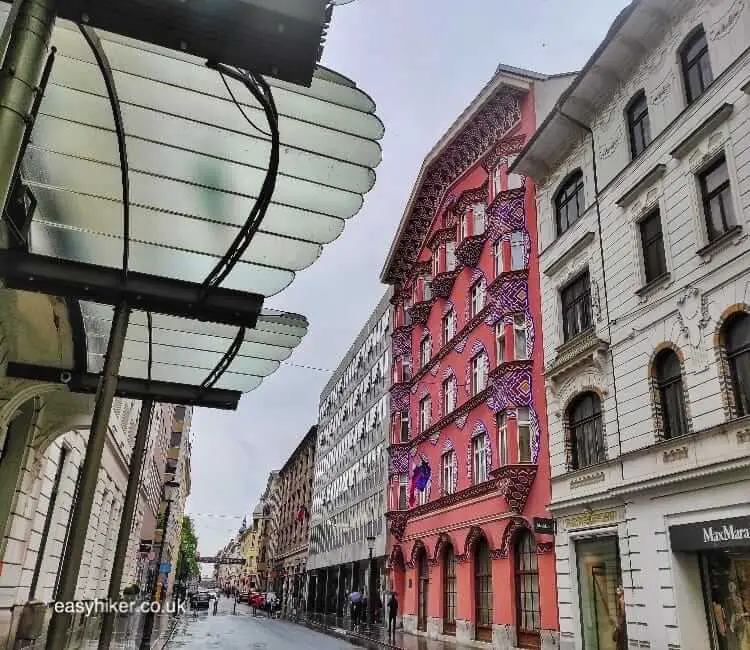
… and an ancient castle broods menacingly over the town.
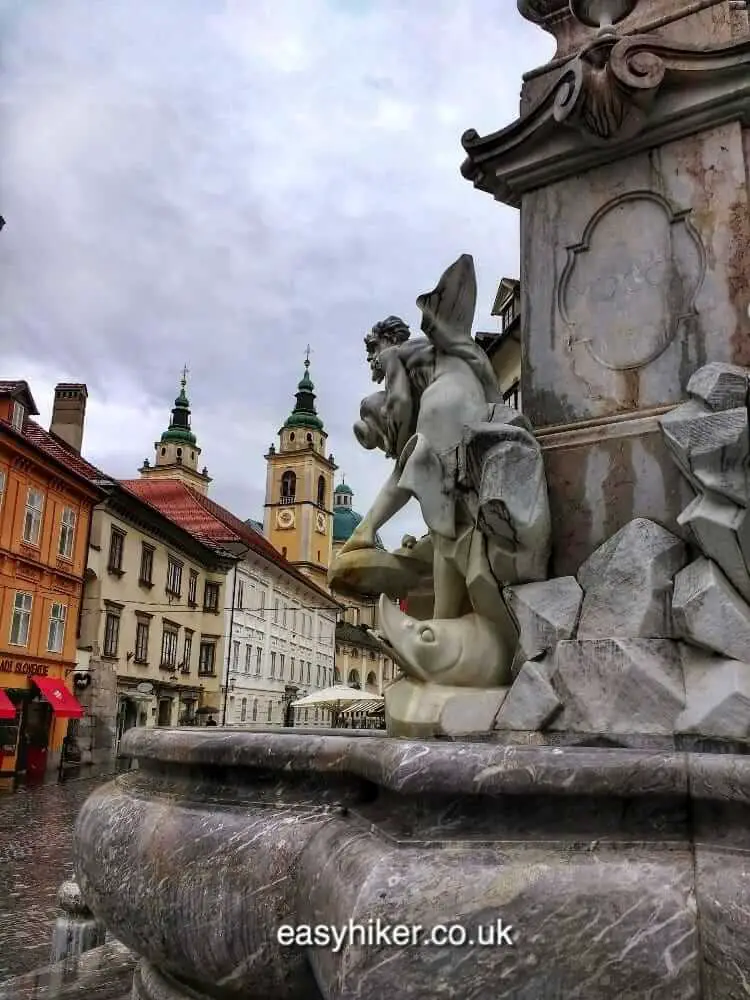
You can reach the castle from the town centre on foot in roughly 30 minutes …
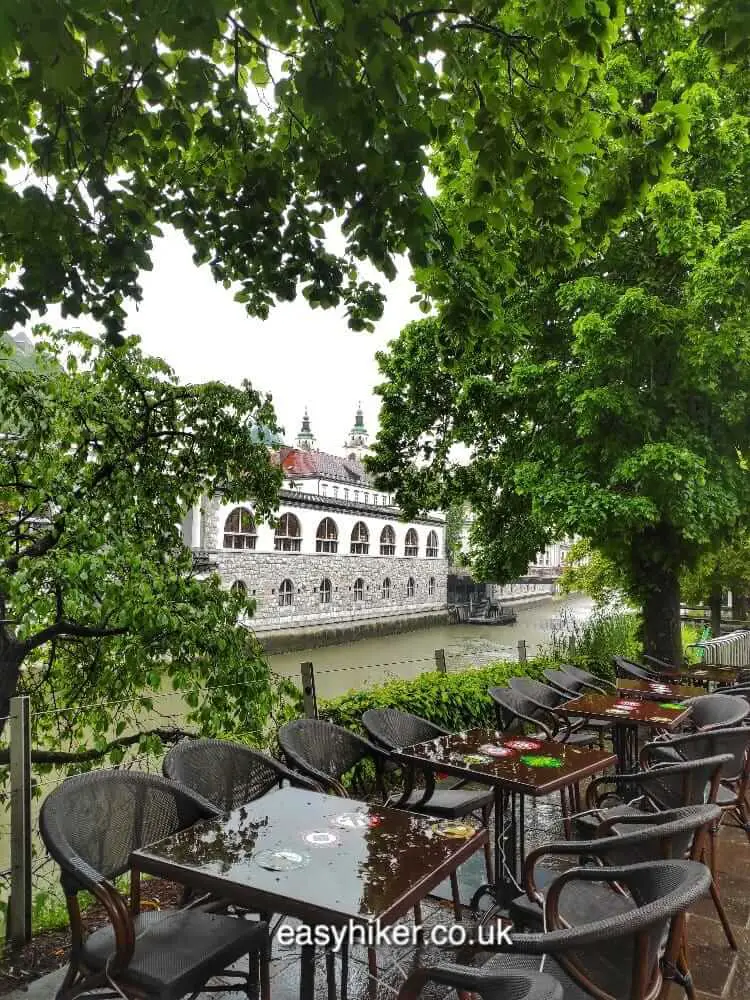
… using a scenic path which leads to a viewing platform with a panorama that rewards your climb even in the pouring rain.
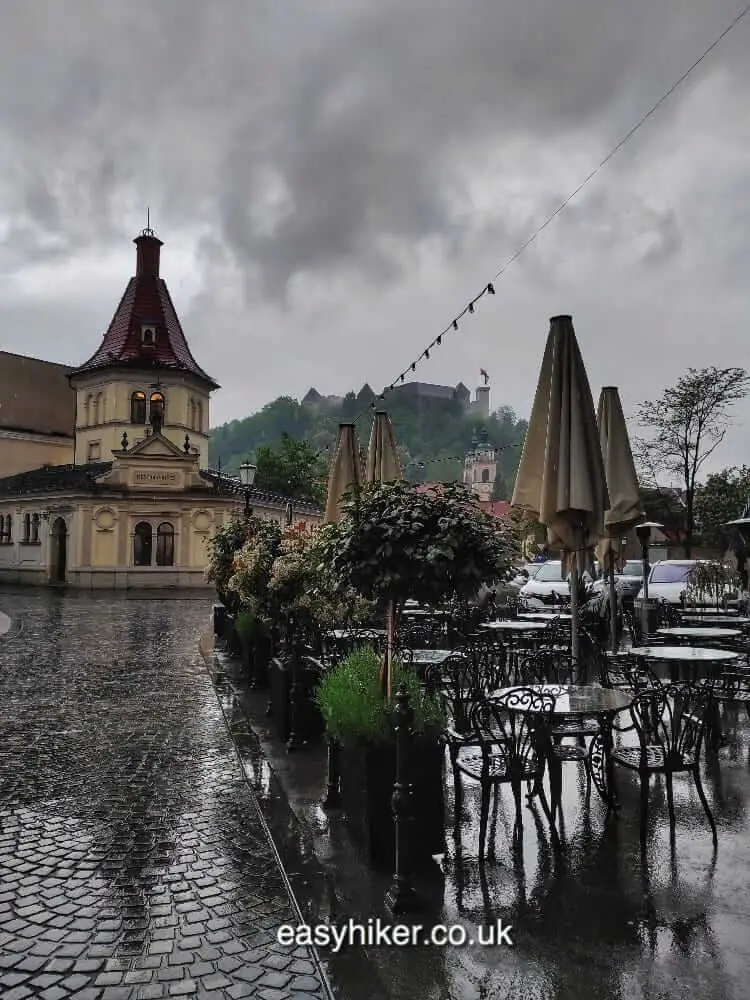
So far, so good and unexceptional.
But Ljubljana has also something that distinguishes it from its Alpine neighbours in the west and north: a history of earthquakes.
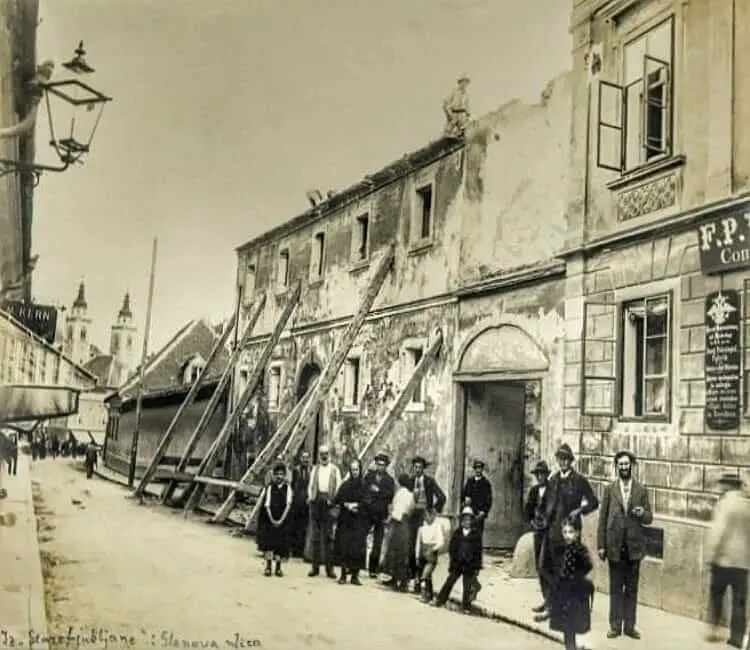
Slovenia lies on the northern fringe of an area – stretching all the way across Italy – where the earthquake risk is considered “moderate” rather than small or negligible. On average, 7 earthquakes a year are registered in a 300 km radius around Ljubljana that reach level 4 or higher on the Richter scale.
Level 4 means that you will be able to feel the earth move although such a quake is unlikely to cause damage to your home unless you live in the most ramshackle of structures.
Every once in a while, however, such a rumble can turn into something bigger. The last time this happened was in 1895, the area’s biggest earthquake in recorded history.
Even then, this was not the kind of seismic catastrophe that can flatten entire city streets: only a handful of people died, and while most buildings survived as well, few of them did so unscathed, and eventually, entire blocks in the ancient city centre around Preseren Square and Miklosiceva Street had to be razed.
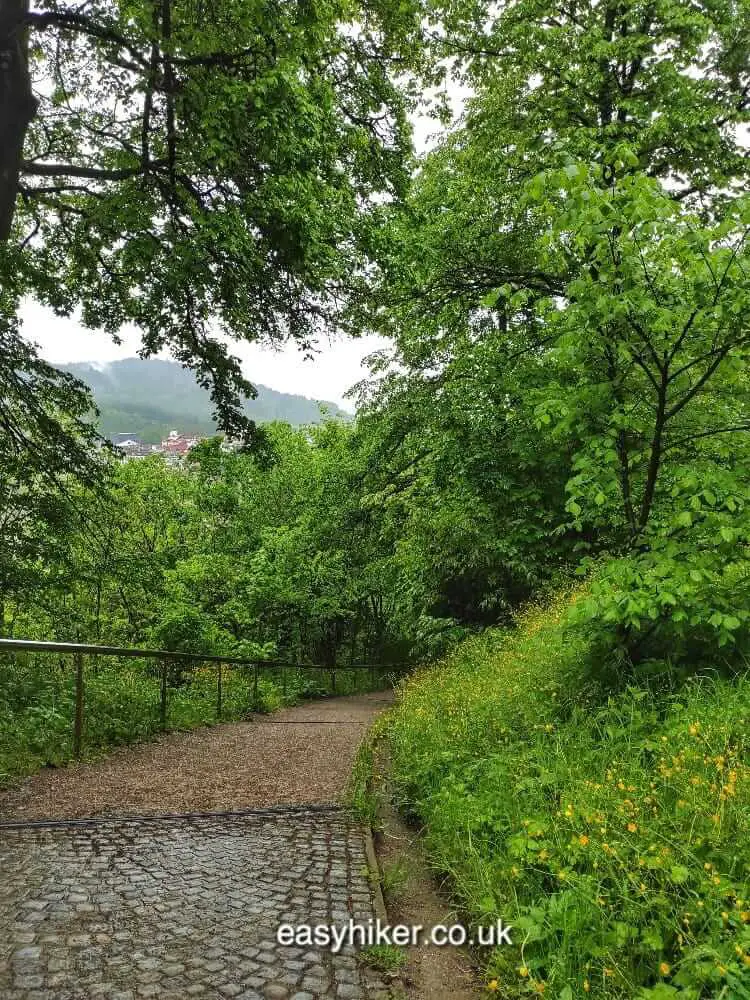
This turned out to be a blessing in disguise. Whereas Ljubljana’s appearance before the quake was described as “provincial”, the city fathers – much to everybody’s surprise – decided to replace the lost urban fabric with what, at the time, were daring, avant-garde structures.
The inspiration was, once again, Austrian, but Ljubljana was looking to Vienna rather than to its alpine neighbours in the north.
The result was a fascinating mix: some buildings reflected the latest trends in Viennese Art Nouveau …
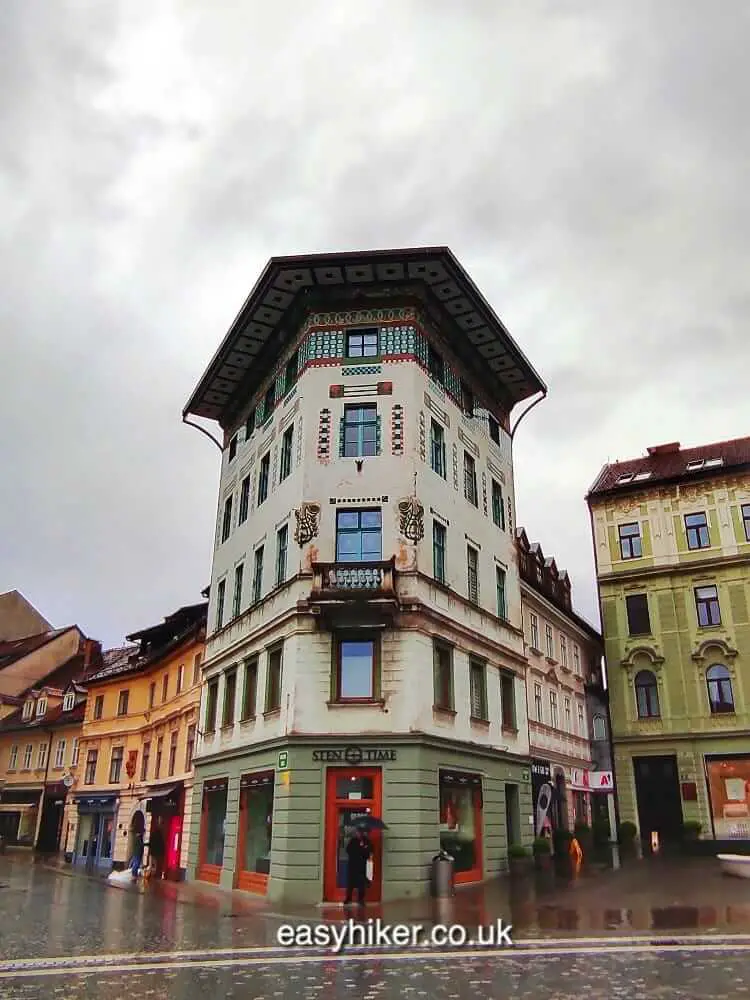
… while some architects managed to weave local patterns into the building fabric.
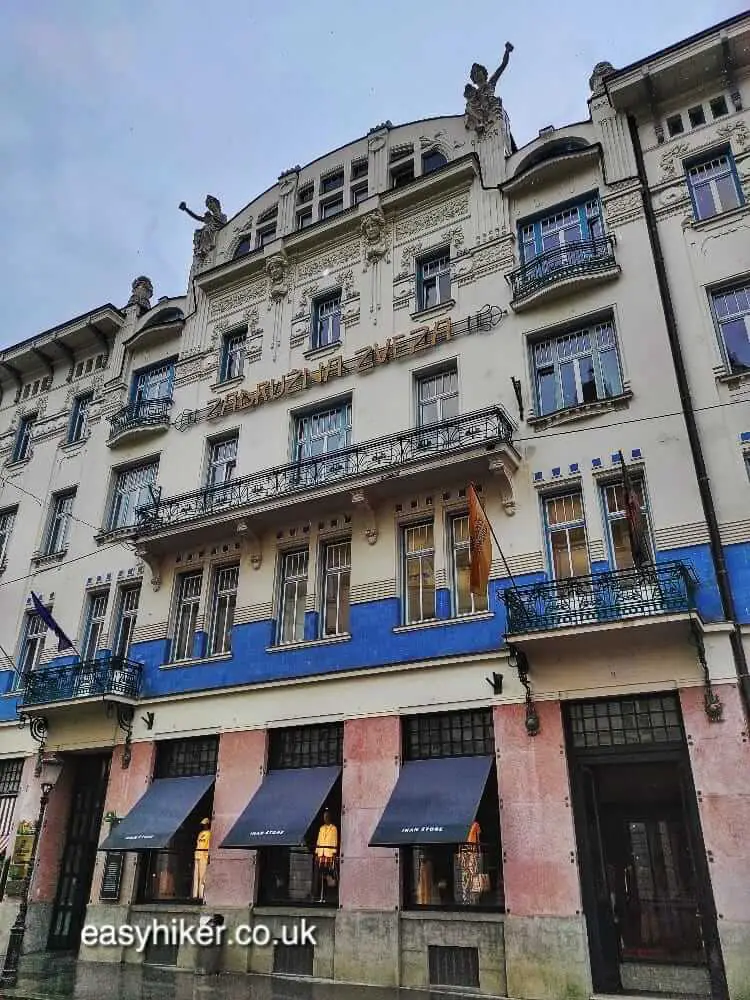
And in some places, they just let rip, most outrageously on the Zmajski Most, the most prominent of the city’s many bridges across the Ljubljanica river.
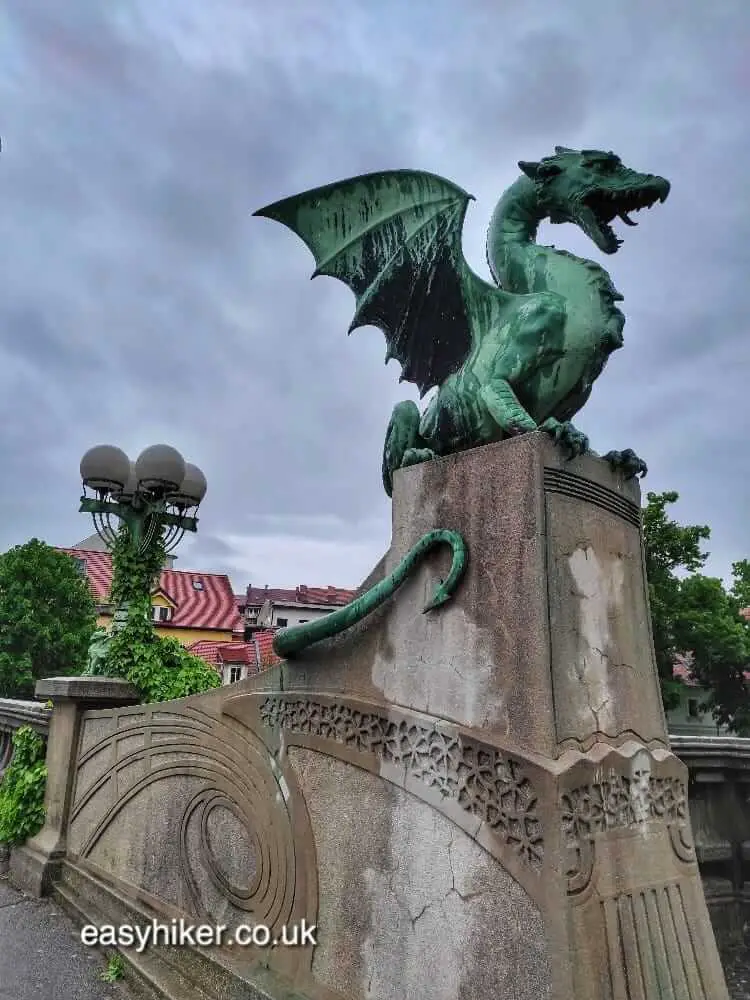
And once a tradition of architectural adventure had been established, innovation could more easily enter, and in 1920s, it was in Ljubljana where the first skyscraper of the Balkans was built.
At the time, the Neboticnik was the highest building in this part of Europe, which tells you as much about the Balkans as it does about Ljubljana. Then as now, some local people and political movements took great pride in lagging behind the cultural trends of the “decadent West”.
Slovenia, meanwhile, a marginal province in new-born Yugoslavia as it had been under the Habsburgs, was always marching to a different beat and a different drummer.
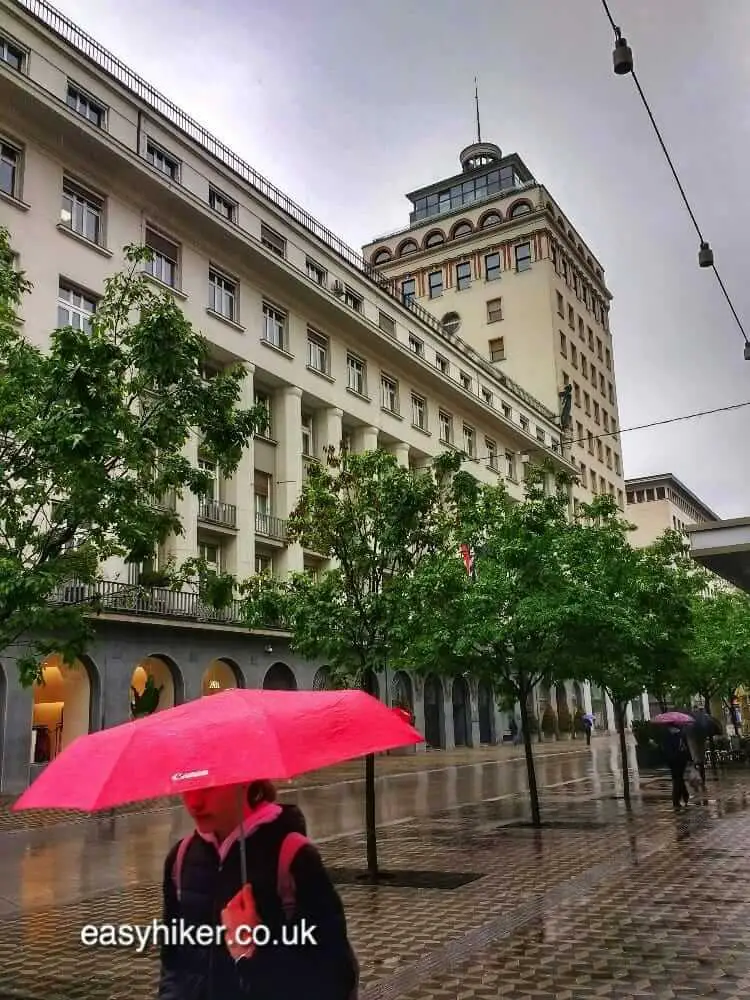
Many period features have been well preserved in the 100-year-old building: details such as spiral staircases, for example, …
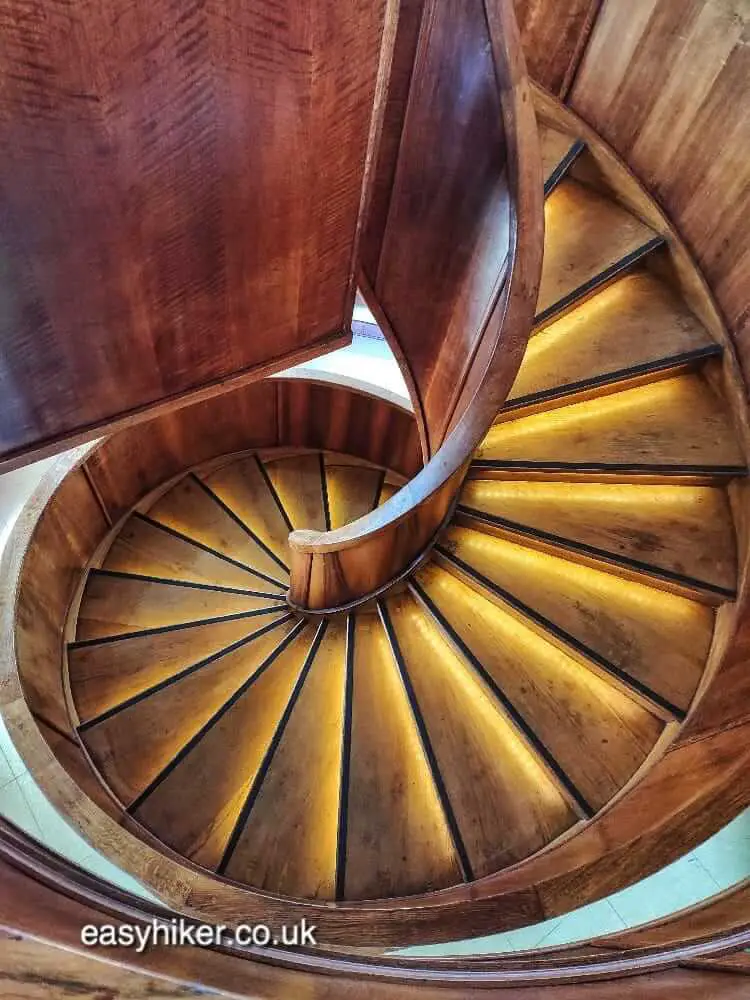
… but equally great care has been taken to ensure that the Neboticnik continues to reflect the old underlying philosophy. It was built and decorated to astonish visitors, through its scale but also by creating sharp contrasts between the starkness of shapes or materials and strikingly vivid colours.
Jagged edges, surprising juxtapositions and a palpable delight in the opportunities afforded by modernity: it is almost like listening to a piece by Stravinsky.
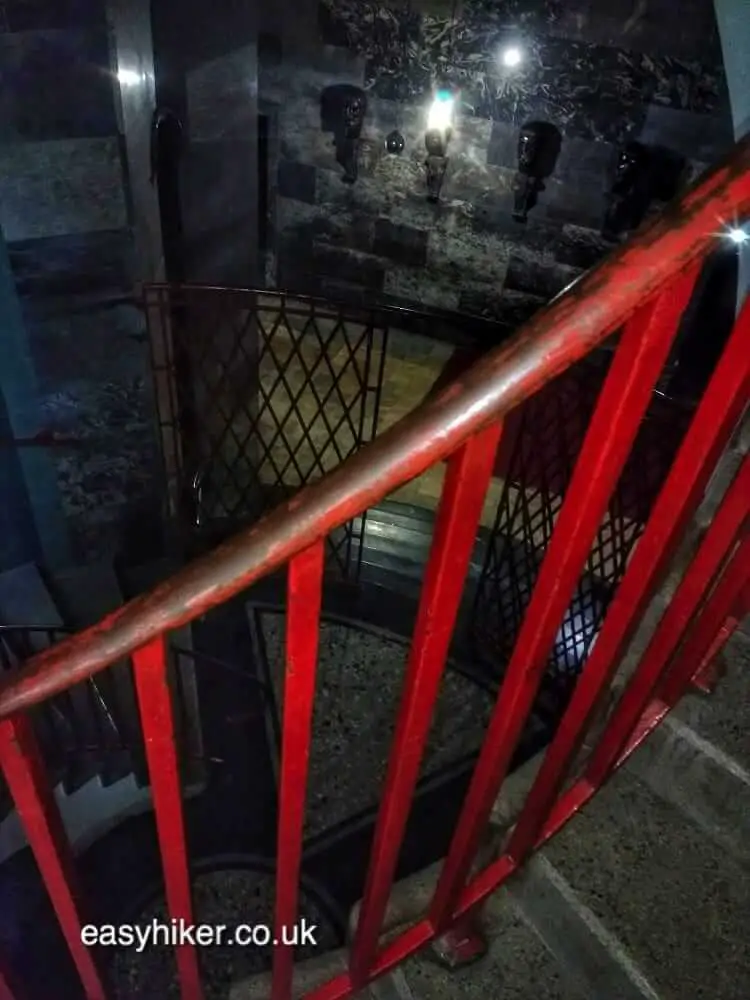
Take the lift up to the viewing platform on the 12th floor (it’s for free) where you will also find a cafeteria and the best views in town.
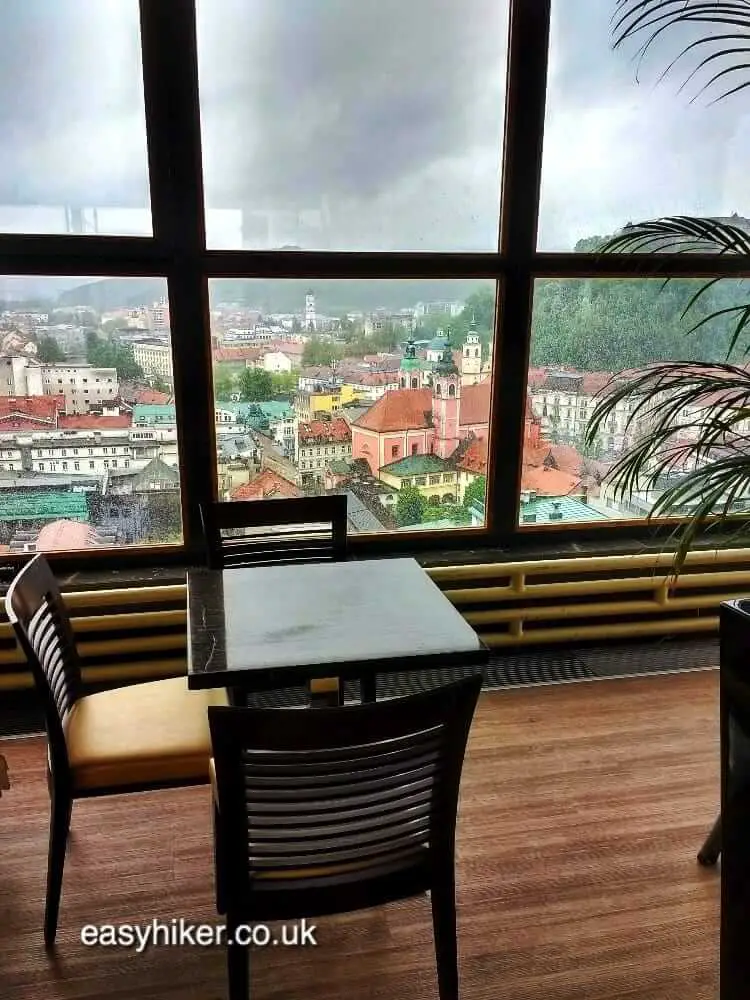
In a single phrase: the Neboticnik is a real find, as is the whole of Ljubljana.
In our travel plans, the trip to the Slovenian capital was little more than an afterthought following our visit of Croatia and the Plitvice National Park.
In the end, it was a proper highlight, and we regretted not having reserved more than one day for the experience.
